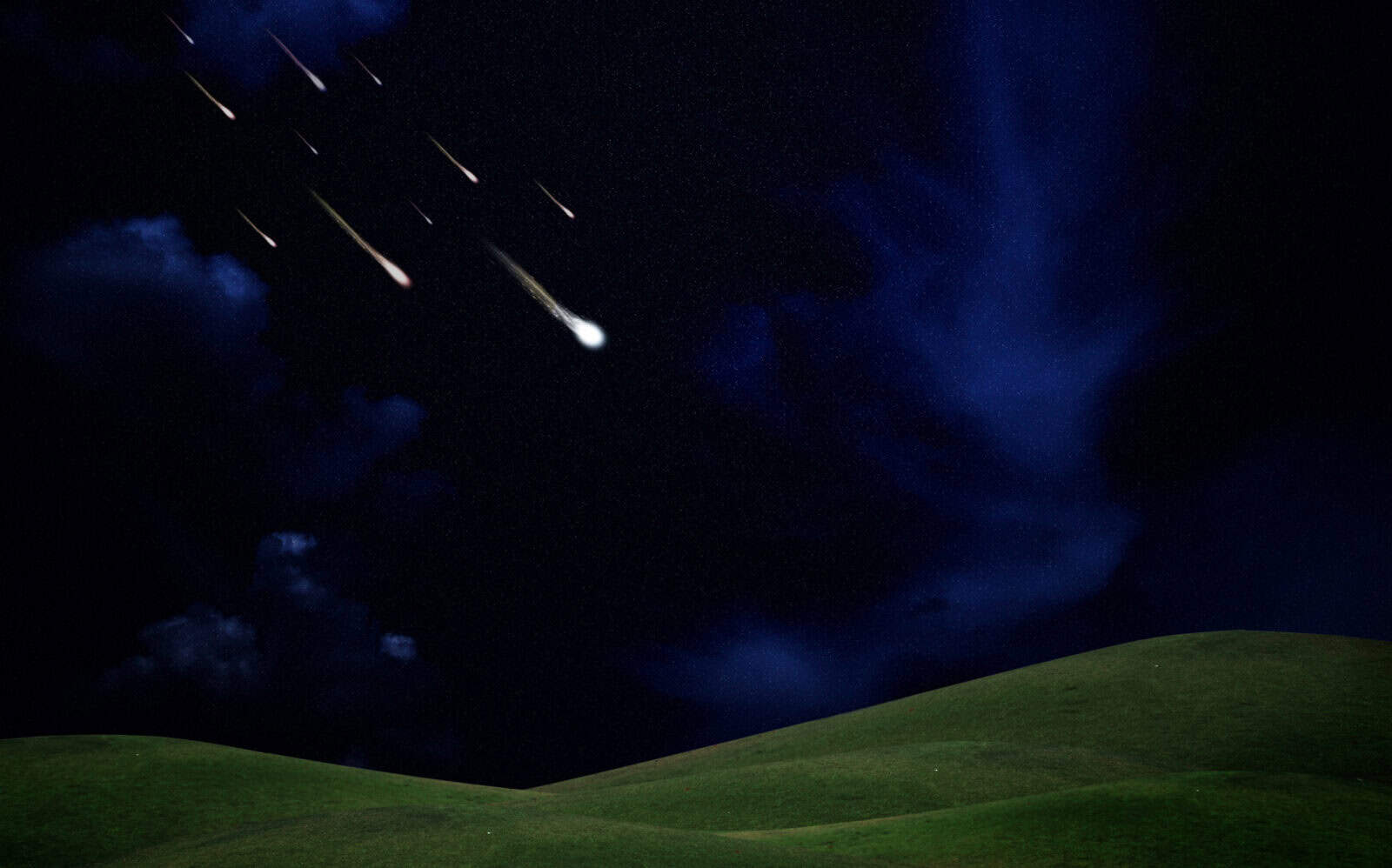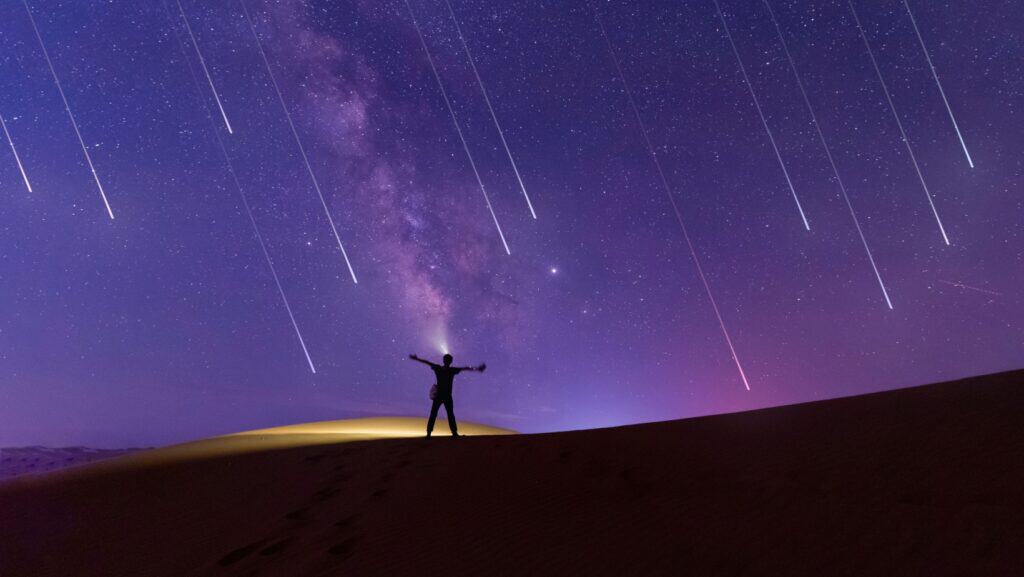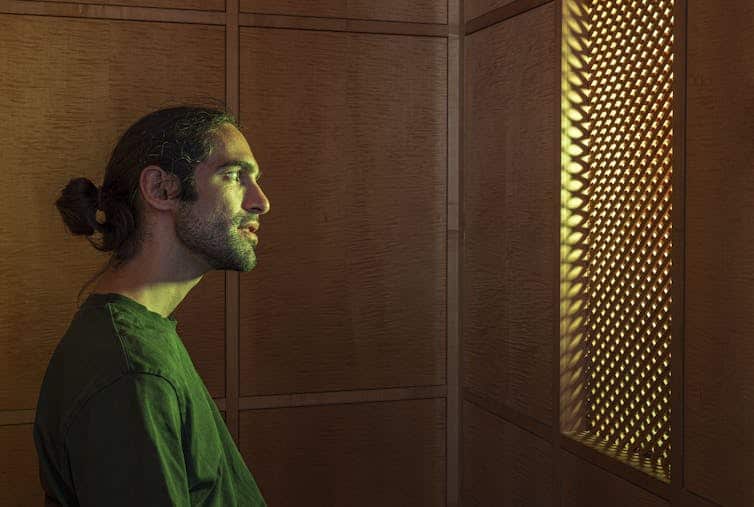The Night the Sky Fell: When 100,000 Meteors Lit Up the World
Since 1833, when the Leonids unleashed over 100,000 meteors an hour, scientists have traced these celestial tempests to a single comet whose debris still shapes our skies today.
Every autumn, as the nights grow long and cold, a celestial visitor sweeps across our skies. The Leonid meteor shower returns each November, bringing with it a mix of quiet beauty and explosive history. Some years, it offers a modest sprinkling of shooting stars. Other times, it has unleashed storms of light so intense that observers feared the world was ending. To understand why the Leonids inspire such fascination, you have to look back nearly two centuries to the night the sky seemed to fall.
The Night of a Thousand Meteors

In November 1833, people across North America awoke to what they described as a storm of fire. For hours, thousands of meteors per minute rained down from the heavens, filling the darkness with countless streaks of light. Newspapers later estimated more than 100,000 meteors per hour, though no one could truly count. Witnesses from farmers to sailors to enslaved people recorded their awe and terror as the heavens blazed. It was this event that inspired scientists to begin systematically studying meteor showers, leading to the discovery of their connection to comets.
The 1833 Leonid storm became a cultural milestone. Paintings, sermons, and even folk songs memorialized the night when stars appeared to fall like rain. For astronomers, it marked the beginning of meteor science as a field. The world learned that these celestial fireworks were not divine punishment but the natural result of Earth crossing a comet’s dusty path.
The Comet Connection
That comet, Tempel-Tuttle, completes one orbit around the Sun roughly every 33 years. Each time it passes, it sheds a new trail of dust and ice into space. When Earth encounters these fresh trails, the result can be spectacular. Historically, the most intense Leonid storms occur in the years following the comet’s return, when our planet crosses through the densest debris streams.
Storms were recorded again in 1866, 1867, 1966, and 1999, each producing hundreds or even thousands of meteors per hour. Those who witnessed them spoke of skies so bright they could read by meteor light. During quieter years, like most in between, the Leonids settle into a gentler display of perhaps a dozen meteors an hour, yet even then their speed and brilliance make them distinctive.
The Science of Meteor Storms
The intensity of a meteor shower depends on how closely Earth’s orbit intersects with the comet’s debris trail. These trails are not static; gravitational forces from planets, especially Jupiter, can nudge them over time. As a result, some years the Earth cuts through a dense section, while in others it merely grazes the edge. Predicting major outbursts is an intricate blend of celestial mechanics and luck.
The meteoroids themselves are minuscule, typically smaller than a pea, but they strike the atmosphere at more than 150,000 miles per hour. The friction causes them to vaporize in a flash of heat and light, leaving glowing ionized trails that sometimes twist and fade like smoke.
A Light Show With a Legacy
The Leonids have a personality that sets them apart. Their meteors are exceptionally fast and often leave long, persistent trains that drift and shimmer. These features make the shower a favorite for photographers and stargazers alike. Even in non-storm years, the Leonids’ swift, vivid streaks feel more dramatic than the slower meteors of other showers.
They have also played a role in shaping public interest in astronomy. The 1833 storm inspired scientists to link meteor activity with comets, while later displays drove public fascination with the cosmos during the Space Age. Today, the Leonids remain a reminder that our planet’s path through the solar system is not empty but filled with relics of ancient wanderers.
What the Future Holds

While no major Leonid storm is expected in the immediate future, astronomers always keep watch for surprises. Models suggest that smaller peaks or outbursts could occur when Earth encounters denser portions of the comet’s trail in upcoming decades. The next potential strong activity might happen in the 2030s or 2040s, though predictions remain uncertain.
Regardless of whether the sky erupts into a storm or offers a gentle sprinkle of light, the Leonids continue to captivate. Each meteor reminds us of the constant movement of our solar system and the connection between comets and our own world.
The Human Perspective
The Leonids tell a story that bridges science and emotion. For early observers, they represented awe and fear. For modern viewers, they are a symbol of curiosity and beauty. To stand beneath a Leonid sky is to feel both small and connected to something vast. It is a chance to reflect on time itself, as each meteor burns up in a heartbeat yet traces a story that began millions of miles away.
As November nights stretch long and cold, find a dark horizon and let your gaze wander upward. You may not see a storm this year, but the sky still holds its secrets. The Leonids whisper of comets, of the rhythm of the universe, and of the wonder that never quite fades from those who take the time to look up.
The Perseids Are Peaking—Here’s Your Guide

Every summer, the night sky puts on a spectacular show, no telescope required. The Perseid meteor shower, one of the most anticipated celestial events of the year, fills the sky with fast, bright meteors that can leave long, glowing trails. But what exactly are the Perseids, where do they come from, and how can you catch the best view? Here’s everything you need to know to enjoy this annual stargazing event. Learn more.






